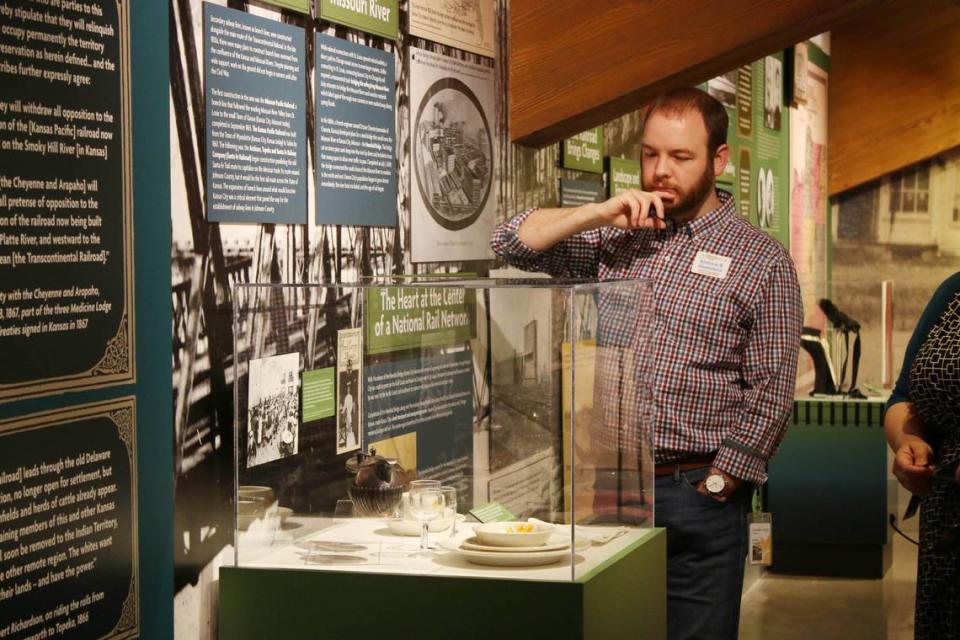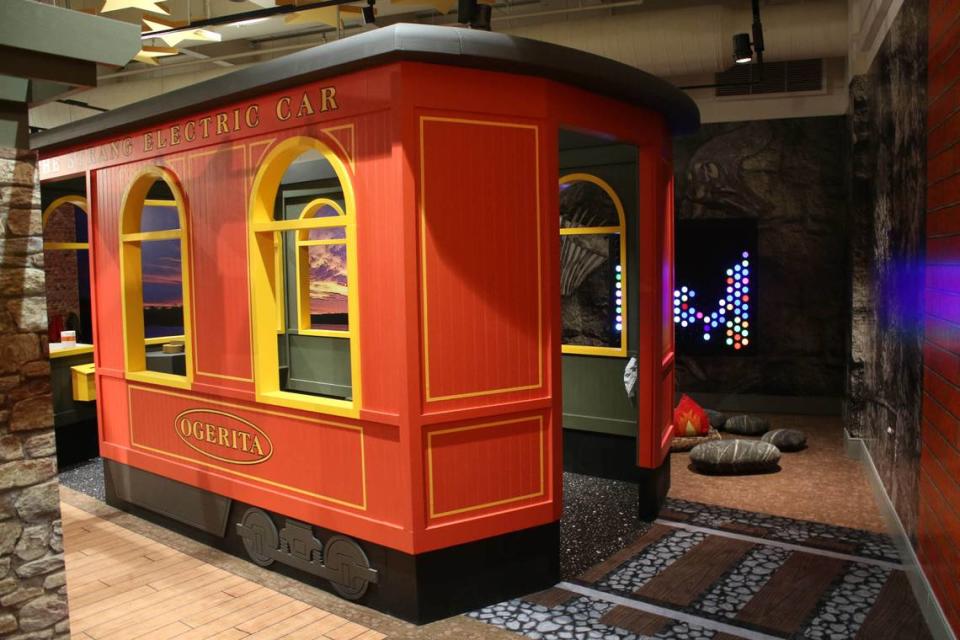How did trains transform Johnson County? Find out at this family-friendly exhibit
The last time you drove on Strang Line Road, you might not have thought about how it connects to Johnson County’s history. A new exhibit at the Johnson County Museum is calling attention to all the ways trains have influenced growth and development since they first rolled through the area in 1867.
“Trains: Transportation and the Transformation of Johnson County” will be open through Jan. 13. Although the more permanent displays at the museum do mention trains, this exhibit takes an in-depth look, with maps, photos, artifacts and even a small model railway.
“Agriculture was changed by the railroad. Before the railroad, most people were subsistence farmers,” said Andrew Gustafson, curator of interpretation at the museum.
“They were growing, raising or making all the things they needed, but once the railroad came through and there were stations out in rural countryside, farmers could grow an entire field of cabbage and sell it to railroads, which would transport it to Chicago or Kansas City or New York City.”

That led to a growth in stores and in shipping goods, because farmers then had cash they could spend in stores rather than producing everything themselves.
“Edgerton is deeply tied to the railroad. The Wilder area in the northern part of the county was really just rural farmland, but it was on the Atchison, Topeka and Santa Fe line that was going out to the west. A depot was established there, and it became a very busy depot for agricultural products, for grains,” Gustafson said.
Of course, the flip side is true, too. If you didn’t have railroad access in the latter half of the 19th century, chances were your town wouldn’t thrive. That’s what happened to Lanesfield.
“When train came through, it went two miles to the east between Gardner and Edgerton, and it bypassed Lanesfield, and so that lack of rail access made folks who lived in that town tear their buildings down, brick by brick, board by board, and move them, mainly to Edgerton, to have that access,” Gustafson said.
Artifacts on display include a piece of track and the sledgehammers workers would have used to hammer it down.
Although the bulk of the exhibit focuses on what Gustafson calls the “sweet spot” of railroads between the 1860s and 1930s, it does address subsequent events and current places in the county related to the railroad.
It also takes a look at how the railroad expansion changed the area’s demographic makeup.
“By the 1920 census, you see a large influx of Mexican rail line workers who are being recruited at the border. ... They called themselves traqueros or track workers. Johnson County had a pretty substantial number of ethnically Mexican rail workers,” Gustafson said.
For a more in-depth look at the traqueros, the museum will be holding a special event at 6 p.m. Thursday, Sept. 14 with Washburn University’s Valerie Mendoza.
The exhibit does address opposition to the railroad expansion that came from the Arapaho and the Cheyenne people as well.
If your younger kids are really jazzed about the train exhibit, they might also want to check out the new trolley in the museum’s KidScape. It’s the museum’s first major addition to the space since 2017.

According to Leah Palmer, curator of education for the museum, the idea came from wanting to bolster the historical content of KidScape.
“It was a great entry point for people to connect with a part of Johnson County’s past in a fun and engaging way,” Palmer said.
Although it meshes well with the train exhibit opening, organizers didn’t plan it that way.
It was coincidental, but not surprising, Palmer said.
The goal of both KidScape and our temporary gallery is to better connect people with the past, and one of the major things that has changed over time is transportation technology,” she said.
The stationary trolley officially opened April 4. Representing the Missouri and Kansas Interurban Railway that opened in 1906, it bears the name of William Strang’s niece, Ogerita, just like the first real Strang Line car.
“When you walk in, you feel like you’re in a trolley car. There’s seats to sit down in; there’s luggage you can bring in with you. You can put on conductor’s hat or vest and steer. You can sell tickets in the ticket window and even change the time on the clock to match the schedule,” Palmer said.
“We try to have everything there to help kids spark their imagination, and they take over from there.”


